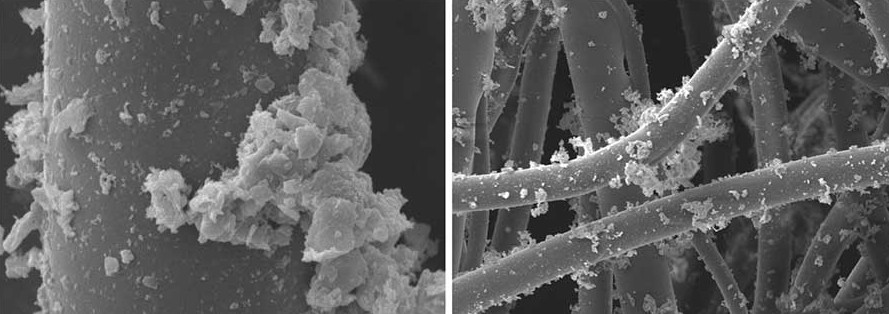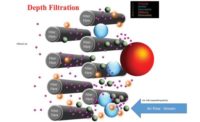Humanity seems to be on autopilot when it comes to thermal comfort. We claim to combat climate change but seem to have no qualms about controlling our escalating emissions. We demand the best IAQ, but, unfortunately, have no infrastructure to accommodate it. We address effective filtration technologies but eventfully favor the conventional. It is no surprise that we will continue to experience frequent pandemics and outbreaks unless we raise the bar of air quality and take efficient filtration technologies from concept to practice.
It's good to get back to “normal” slowly but not back to the practices that have led to and delayed our exit from the COVID-19 pandemic. The importance of air filter performance in enhancing air quality has been belittled for decades and perceived as an acquired luxury. As a result, better IAQ never gained the political traction needed to be a national priority. However, the scale and scope of losses in human lives and economic setbacks have made us aware of air quality and filter performance. The pandemic has highlighted the glaring deficiencies of filter performance and finally brought the air quality narrative from the backburner to the news headlines. Yet, despite all our technical know-how, knowledge, and collective experiences, we continue to aimlessly wander in our HVAC systems, washing coils, dedusting clogged filters, and cleaning ducts, believing we have satisfied our air quality obligations.
Enhancing IAQ is virtually impossible amid exposed HVAC systems, leaky ducts, and low-efficiency/failing air filters. While filtration standards are always in demand, they are poorly understood, rarely followed, and never applied assiduously. Using the same filter selections for contaminant types, concentration, and size distribution suggests we do not have an appropriate filtration plan. To find the light in the never-ending Corona tunnel we find ourselves in, efficient air filters need to be thought of as an integrated segment of the HVAC systems, not merely a retrofit. Furthermore, users, engineers, and consultants should share objectives and responsibilities by employing all available maintenance measures and filtration technologies to attain the best IAQ possible.
Know Your Pollutants — Distinguish Between the Issues
The absence of aerosol monitoring is proof the air quality is dicey in nature. We need to consider appropriate filter selection that can accommodate all types of pollutants once their physical and chemical characterization has been determined. For example, part of the characterization is conducting an Energy-Dispersive X-ray Spectroscopy (EDXS) analysis to determine the chemical composition of the particles suspended in the air. Figure 1 shows a typical EDXS analysis of particulates in the Middle East region, which was found to be mainly silica.

The wealth of knowledge that can make air filters outperform has not been utilized. Unfortunately, the advances of air filtration technologies have not trickled down to all HVAC filter installations and, at times, are regarded as an “overshoot” of the basic filtration needs. It is not surprising that IAQ enhancements have stagnated for decades and were barely granted their due attention in HVAC system selection.
To implement corrective measures, we ought to highlight the air quality issues and distinguish whether they are ventilation or filtration issues or if it is a combination of both. Recently, there has been a great deal of hype on moisture control, and several studies and scholars correlated humidity control and virus survivability in an indoor environment.2,3,4 Ironically, the sole reliance on a single stage of an inch-thick washable filter in fan coil units (FCUs) and the installation of these filters before they are completely dry, not to mention their poor filter efficiency, may counterproductively affect the IAQ. Air-handling units (AHUs) use the second stage of filtration (pocket filters) as shown in Figure 2. The irony is that these secondary filters occupy tremendous space in the AHUs compared to their modest performance. Unfortunately, although these filters are disposable, it is quite common that maintenance teams reinstall them after attempting to regenerate them by water or compressed air.

It's impossible to embark on air quality enhancements if these practices exist. There is a lot to tweak in terms of IAQ, not just to demand higher filtration efficiencies but to consider the entire HVAC system and the built-in environments holistically. Satisfaction is gained through increased productivity and improving dull buildings through the Internet of Things (IoT). Therefore, enticing HVAC engineers to design systems that would respond to variations in IAQ will prove invaluable in confronting a wide array of pollutants, not just particulate matter (see Figure 3). Addressing only the associated rise in pressure drop when selecting air filters with higher efficiency is yesterday’s argument. The advances in filter media (see Figure 4), aerodynamic design, and optimized performance can spark a new beginning to attain cleaner air at a much lower pressure drop.


Pulling the Plug
We can no longer pull the plug every time COVID cases hike. There have to be concrete measures to confront current and future pandemics. Employing lockdown as a safety measure to avoid the virus is not just the first idea we have had, but it seems our only idea to confront such COVID case hikes. We cannot run away and hide. That is indisputable evidence that we neither have the tools nor the conditions to confront the virus. While air filtration technologies can contribute to a better IAQ, it's critical to realize it is not a stand-alone solution. Further, we need to revisit our conventional HVAC systems and outdated filtration selections, which were sought to protect us in the past decades but failed to do so during the pandemic. The paradox that defines the status quo of our air quality is that we desire to enhance our IAQ. Still, there is no infrastructure to work with in terms of filters, sensors, and adaptive HVAC systems capable of responding to the IAQ changes.
Compounding the issue is the debate about whether or not the virus is airborne and if it is indeed possible to transport it through HVAC components/ducts. We spent far more time convincing others of our answers to such questions and arguing over different perspectives rather than assuming worst-case scenarios and acting upon them. The pandemic is a prime time to revolt against outdated and conventional practices that have failed to protect our respiratory systems and instead participated in spreading the coronavirus. Conventional maintenance measures thwart any endeavor to attain better air quality. Raising the bar of air quality must be seen as an engineering approach. The addiction to using washable and reusable filters has compromised any IAQ and filtration upgrades. The villain in the story is the tremendous reliance on saving costs rather than lives by dedusting a clogged filter with compressed air, cleaning ducts, washing disposal filters, and coils. Therefore, it's time to bend the arc of conventional practices toward professional, thorough, and preventive maintenance programs to take air quality to the next level.
COVID-19 has now showcased compelling economic reasons for resolving air quality issues. The objective here is not just to avail the best IAQ possible but to address all relevant matters influencing the built environment. HVAC systems must step up, and we should think beyond thermal comfort. That would include rewiring our buildings and cities to place IAQ at the forefront of national priorities by continuously monitoring outdoor contaminants, physically and chemically, in order to employ corresponding filtration solutions.
The pandemic transformed air filtration from an unfashionable corner of the HVAC systems to a central pillar of global economies. It's time to get it right; we ought to focus on what is effective, not what is in fashion. We need to admit our conventional philosophies trapped us in the pandemic and delayed our exit from it. If our literal adherence to filtration and HVAC standards has contributed to the deterioration of IAQ, we certainly need to check the metrics of these standards. The narrative is not “Let us be ready for the next pandemic;” it is the notion, “Let us never have one again.”
The Shortcut Mindset
In the wake of existing maintenance programs crashing and air filter performance collapsing comes the right opportunity to raise the bar of air quality. The huge bill from lockdowns and multiple curfews positioned governments and policymakers to be receptive and act swiftly. However, as we remain entrenched in the facade of normality despite its degradation and going back to pre-COVID maintenance tricks, we fool ourselves into believing that the pandemic was a daydream (nightmare) and we can dismiss the crisis. We cannot allow “back to normal” measures to embrace the outdated mindsets that allowed microorganisms to crush our economies, invade our cities, and render outdoor and indoor environments unlivable.
It's hard to inspire a change in the mindset of maintenance managers or facility directors who only care about their end-of-the-year bonus. So, it's no surprise their inventory is glutted with washable filters that rust and degrade over a short period of time and offer a modest efficiency even at sizeable particulate matter (PM5 and PM10).
The mindset of maintenance shortcuts will never position air quality to be a pressing issue in the built environment. Air filtration technologies have been underutilized for years. The sole focus of air quality revolves around settling for what we can do rather than what we must have, inheriting poor IAQ, and contributing further to the spread of microorganisms. It's time to regard filter performance as the driving force of the built environment, not an accessory of the entire HVACR system.
Reimaging Air Quality — the Cost of the Lockdown
Today, existing and new buildings are subject to tremendous pressure to provide healthier indoor environments. However, any cost of filtration upgrades is infinitesimal compared to the cost of the lockdown. Although COVID-19 has brought immense suffering, it positioned air quality to the center and forced everyone to reimagine air quality given the incredible advances in research and development. At the same time, though, it also shed light on the lack of adequate regulations. Today, technology has provided us with the tools and resources to attain the best air quality, and the pandemic has given us the business case to act swiftly. We must unweave every strand of conventional practice that led to the spread of the virus. We ought to admit that maintenance programs in place are, at best, modest, if they exist at all. It's time to certify HVAC systems’ air filter performance and for maintenance programs and teams to take air quality to the next level. It is now time for the global government to legislate rules and regulations that match the importance of indoor and outdoor air quality and allocate budgets and plans to improve IAQ.
The Expected Fate
The pandemic was the expected fate we had to face after decades of complacency and a clear manifestation of how we have been polluting our environment through the horrendous ways we generate and use energy. Along with the global imperatives of climate change, the economic pressures of oil price hikes, and resource depletion, international attention needs to be refocused on energy use, generation, and environmental stewardship. Issues, such as urban air and IAQ, were not on the priority list just a short time ago. Comprehensive air quality solutions are frustrated by the complex structure and speed of the decision-making processes at all levels of government. Does it come as a surprise that we are paying the penalties of doing nothing as far as granting air quality and filtration technologies their due attention? Air filter selections are usually the last issue to address and the sector least invested in. Therefore, everyone is at the mercy of their own filtration devices, wearing a personal mask around the clock.
The Way Forward
An ideal start would be for governments to legislate a law that insists on continuous air quality monitoring outdoors and indoors. That would facilitate verifying air filter performance installed in the AHU to protect human occupants. However, unless global governments ensure adherence to second-to-none rules and regulations that protect the indoor environment, enhancing IAQ will not be fully implemented. Over the past few decades, humanity spent more time talking about enhancing air quality and less time taking action. Without strict government emission regulations and incentive programs to improve outdoor and indoor air quality, the rising tide of air pollution will have well-pronounced effects on public health globally. A parallel approach is to establish training programs for HVAC maintenance teams/staff. This would entice them to be part of the “better IAQ” endeavor through certification and recognition. But, we must admit, they are our boots on the ground, and equipping them with a modest screwdriver does not make them ready, willing, or capable of getting the job done, given the abrasive ambient and working conditions they have to sustain.
The Embers of Pandemics
Amid our air quality challenges, we had neither a qualm about our escalating emissions nor have we worked swiftly to combat climate change. The air pollution humanity faces today requires that we all espouse the responsibilities for the ways we urbanize, live, and pollute our atmosphere. For decades, we thought we had all the air quality answers. Now, the pandemic has forced us to ask different questions. The pain future generations will inherit due to our being in “complacency mode” will lead to more pandemics, submerged cities, decimated food supplies, displaced nations, and abounding conflicts. Environmental agreements require far more than the ink used in signing them. Our promise to the environment comes at a price. We must scale up our ambitions and follow through with appropriate actions. We must embrace the sense of urgency about bringing environmental agreements into force. Until pollution quests are answered, the embers of pandemics will continue to burn.
Reference:
[1] Al-Attar, I.S. 2011. “The Effect Of Pleating Density and Dust Type on Performance of Absolute Fibrous Filters.” Loughborough University.
[2] Guionie, O., Courtillon, C., Allee, C., Maurel, S., Queguiner, M., & Eterradossi, N. (2013). An experimental study of the survival of turkey coronavirus at room temperature and +4 degrees C. Avian Pathology, 42, 248–252.
[3] Ward MP, Xiao S, Zhang Z. Humidity is a consistent climatic factor contributing to SARS-CoV-2 transmission. Transbound Emerg Dis. 2020;67:3069–3074.
[4] Ward, M. P., Xiao, S., & Zhang, Z. (2020). The role of climate during the COVID-19 epidemic in New South Wales, Australia. Transboundary and Emerging Diseases, https://doi.org/10.1111/tbed.13631





